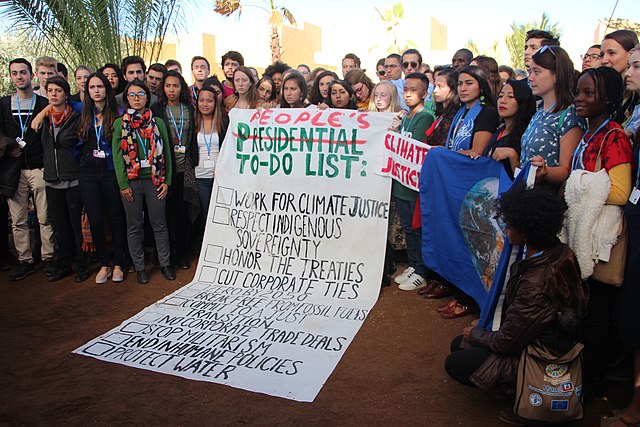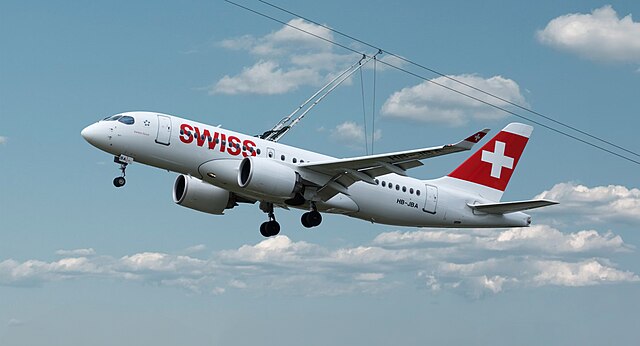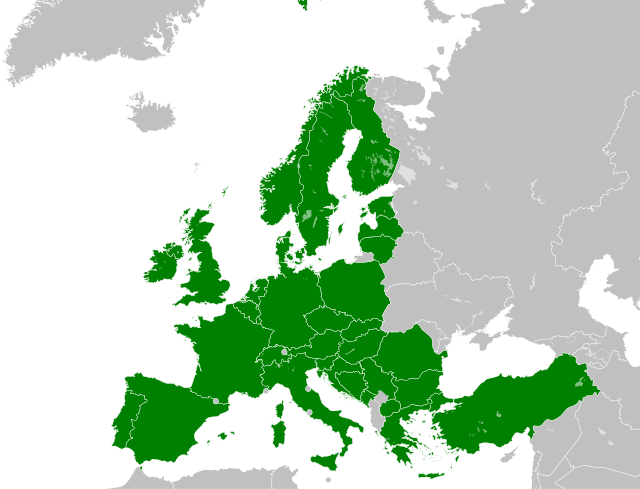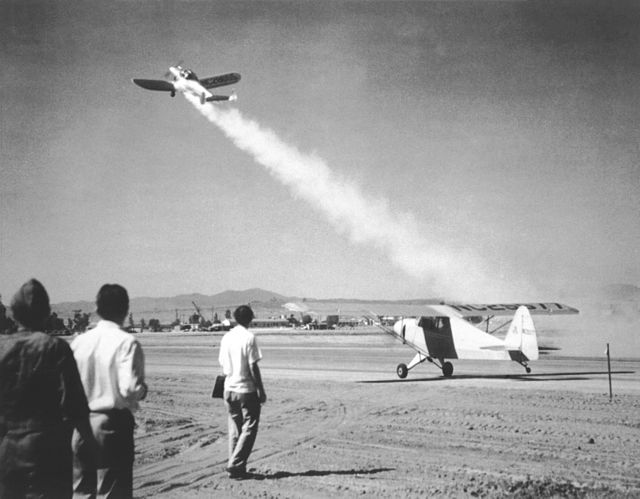 Photo: Airplane in a polluted environment via Leonardo.ai
Photo: Airplane in a polluted environment via Leonardo.ai
As of 2024, aviation contributes to 2.5% of global human carbon emissions annually. To put that into perspective, if treated as a country, the global commercial aviation industry would be the sixth-largest emitter right after Japan. In light of such findings, half a decade ago, an environmental movement called “Flygskam” sprang into existence. It aims to discourage people from flying in any aircraft. It targets to shame people who travel by flight. In parallel, a related environmental movement called “tagskryt” led to 1.5 million more railway tickets being sold in 2018 than the previous years.
But we still hear news of celebrities using private jets to fly over short distances storming social media repeatedly. Commercial flights, some of which have been given points for offsetting carbon emissions, are still one of the major contributors to global human carbon emissions.
But has the theme of “Flygskam” been flourishing in recent times? 5 years down its inception, what has the movement morphed into? With a record number of people traveling by aircraft, how effective has the movement been? Let’s find out.
Origins of Flygskam:
The Swedish neologism “flygskam” is a combination of the words “flyg” (flight) and “skam” (shame). It is meant to describe the sense of guilt or shame that comes with realizing the extent to which a single flight affects the environment. Flygskam movement started in 2017 when Swedish biathlete Bjorn Ferry made his decision to give up flying entirely known to the public. After realizing his career alone was responsible for 16 tonnes of CO2 emissions annually, he decided. (Within, September 15th, 2019).

The movement gained popularity after various Swedish celebrities, including the teen environment activist Greta Thunberg, replicated the decision. Traveling by train was the alternative flight shaming promoted; known as Tagskryt, or “train bag”. The effects grew visible rapidly. The airline industry saw a notable drop in air travel in less than two years, while rail journeys increased in the same period. (Higham and Font, 2020) Frequent flyers and specific sectors that require frequent traveling are now being targeted in social media with hashtags like #flying_less or #staying_grounded. Many scholars and activists supported Flygskam, but another school of thought calls it hypocritical.
The global trend of the aviation industry and CO2 emission:
Globally, developed nations consume more than half of all aviation fuel. In 2018, the US alone consumed over 20% of the world’s aviation fuel. The majority of aviation fuel consumption that year occurred in OECD nations, which account for 15% of the global population. (United Nations, 2022)
32% of all aviation fuels were consumed by China, Russia, and non-OECD nations in Europe and Asia, making up nearly 60% of the global population. We may anticipate a rise in airplane passengers since these nations’ populations are predicted to increase. The International Air Transport Association predicts China will overtake the US as the largest aviation market by the middle of the 2020s. (IATA, 2018)

Global oil consumption by fuel type. Consumption measured in million tonnes of oil equivalent (mtoe) on the left axis, and the share of aviation in global oil consumption on the right axis. Jan Ditzen
Positive impacts of Flygskam:
Reduced Environmental Footprints
As one of the greatest environmental movements in recent years, the flygskam movement has had many positive impacts. According to a report by the Energy Transitions Commission on “The Decarbonization of Difficult-to-fix Industries”, changes in transportation modes and logistics efficiency could cut carbon emissions from heavy-duty transportation (including aviation) by 20%.
On a kg/km basis, switching short-haul passenger trips from airplanes to trains reduces carbon emissions by 85%. (Schroders, 2019). After its popularity, the movement changed the decision of European governments to take action to reduce the environmental footprint of the aviation industry by implementing additional taxes or bans on domestic flights.
The concepts of More Electric Aircraft (MEA), All Electric Aircraft (AEA), solar-powered aircraft, and Liquid Hydrogen-fueled Aircraft are being noticed in efficiency, cost, and environmental impact.

Electric Airbus A220 (Bombardier C-Series)
Aircraft designers and engineers are working to improve the aircraft by changing its systems and fuel types for the sustainability of Environment. People are gradually becoming conscious and supporting ACARE(The Advisory Council for Aeronautical Research) to achieve its goal. Many organizations have imposed short-haul flight bans on their employees. Usage of trains or ‘ground vehicles’ has increased while domestic flying has decreased.
Increasing train-demand
SJ, Sweden’s main train operator confirmed 1.5 million more tickets sold in 2018 than the preceding year. The same data can be seen around Europe as well. The moment since its beginning have gained much positive feedback and support from the public sector as well as from notable figures. Driving holidays have become more popular in place of flying holidays in the OCED countries which are primarily responsible for an abundance of CO2 emissions through aviation. The Eurail Pass, a railway service that allows us to pass through 33 European countries by rail, has seen an increase in customer numbers in recent years.

Challenges of Flygskam:
Skeptical aviation industries:
Many aviation industries are treating the Flagskam phenomenon as a threat to their business. The airline Swedavia, which runs ten of the busiest airports in Sweden, reported a 4% decrease in passengers in 2019 over 2018. The decline was mostly concentrated in domestic travel, with a smaller decline in foreign passenger volume. It has increased the number of ground vehicles and has created traffic around cities.
Many people and organizations are against this movement stating ground vehicles are time-consuming and flying saves valuable time. One of the key reasons for the limited success of Flygskam movement is the deficit of viable alternatives to air travel. Long-haul international travel remains predominantly reliant on air transport. Flygskam struggles as good, affordable alternatives for long trips don’t exist.
Soaring air demand in Asia
A second reason the Flygskam movement may not take off is the soaring demand for air travel in Asia. With 1.5 billion passengers and a 36.3% market share in 2017, the Asia-Pacific region saw the highest number of passengers in all of aviation. Additionally, the area had five of the busiest international airline routes and saw the largest increase in traffic year over year. Shukor Yusof, an aviation expert at Endau Analytics, predicted in an interview with Deutsche Welle that the Asia-Pacific region “will account for up to half of total annual increase in air traffic by 2020.” (Forbes, 2018)

Notable people involved in the movement:
Greta Thunberg :

A Swedish environmental activist, Greta is actively working to reduce carbon footprint, advocating environmental issues on the global front, and inspiring millions of people worldwide. Daughter of Malena Ernman, celebrated Swedish opera singer Greta began strongly advocating for the movement once her mother stood by it and publicly announced that she would stop flying.
When Greta was invited to take part in two major climate summits to be held at UN Headquarters, she didn’t take a plane to the summit but a boat. She was widely noticed at COP24 (2018 United Nations Climate Change Conference) and in the concept of “Friday for the future”. Later on 23 September 2019 at the United Nations Climate Action Summit after her strong discourse, she steered great awareness and passion for environmental conservation among commoners and leaders alike.
The most celebrated portion of her discourse:
“This is all wrong. I shouldn’t be up here……
People are suffering. People are dying. Entire ecosystems are collapsing. We are at the beginning of a mass extinction, and all you can talk about is money and fairy tales of external economic growth. How dare you! ”
She focuses on making world leaders and grown-ups conscious of climate change and its effects on humans, and the Earth itself.
Staffan Lindberg
The Flagskam movement became popular after Swedish Singer Staffan Lindberg gave up flying in 2017. He announced that he would no longer use air travel.
Bjorn Ferry

Swedish Biathlete and Environmental activist
He is a Swedish medal-winning Olympic athlete who talked about the rising greenhouse gas emissions by the airline industry and avoided using any aircraft. His thoughts gained considerable momentum in the worldwide forum after Greta Thumberg refused to fly. Bjorn after realizing his career alone was responsible for 16 tonnes of CO2 emissions annually, made his decision public to give up flying.
How has Flygskam changed over time?
To reduce CO2 emissions, we should explore eco-friendly alternatives like bicycles and electric ground vehicles. Some climate activists suggest avoiding flights altogether, but this isn’t feasible for everyone. Time constraints, work obligations, and lack of alternatives often require air travel. Instead of criticizing flying habits, the focus should be on improving aviation technology and systems. This will help minimize environmental impact. Fuel use for takeoff and landing is consistent, regardless of flight duration. This highlights the importance of making aircraft more environmentally friendly. By prioritizing advancements in aviation technology, we can achieve sustainable solutions without compromising necessary air travel.
Tim Alderslade, chief executive of Airlines UK, the industry association representing 13 UK carriers, said:
“Airlines believe we need a strategy that meets the government’s ambition of promoting sustainable growth for our sector.
The aviation industry acknowledges the need to address its environmental impact. They are committed to halving emissions by 2050 and collaborating with governments to achieve a net-zero carbon future.”

References:
Marcus Lu Article/Editing: and Jenna Ross Graphics & Design (2023) Visualizing all the world’s carbon emissions by country, Visual Capitalist. Available at: https://www.visualcapitalist.com/carbon-emissions-by-country-2022/#google_vignette (Accessed: 06 June 2024).
Higham, J. and Font, X. (2019) ‘Decarbonising academia: confronting our climate hypocrisy’, Journal of Sustainable Tourism, 28(1), pp. 1–9. doi: 10.1080/09669582.2019.1695132.
Hervey-Bathurst, I. (2019) ‘flygskam’ – the very real impact of climate change on Swedish Airlines, ‘Flygskam’ – the very real impact of climate change on Swedish airlines. Available at: https://www.schroders.com/en/global/individual/insights/flygskam-the-very-real-impact-of-climate-change-on-swedish-airlines/ (Accessed: 06 June 2024).
World population prospects – population division (no date) United Nations. Available at: https://population.un.org/wpp/ (Accessed: 06 June 2024).
Nina Wormbs and Maria Wolrath Söderberg (2023) Flygskam / Flight Shame, Aarhus University. Available at: https://nordics.info/show/artikel/flightshame-in-sweden#:~:text=The%20word%20flight%20shame%20–%20flygskam,feel%20guilty%20or%20ashamed%20about. (Accessed: 06 June 2024).
Rosen, E. (2018) Over 4 billion passengers flew in 2017 setting new travel record, Forbes. Available at: https://www.forbes.com/sites/ericrosen/2018/09/08/over-4-billion-passengers-flew-in-2017-setting-new-travel-record/?sh=2649713a255b (Accessed: 07 June 2024).

